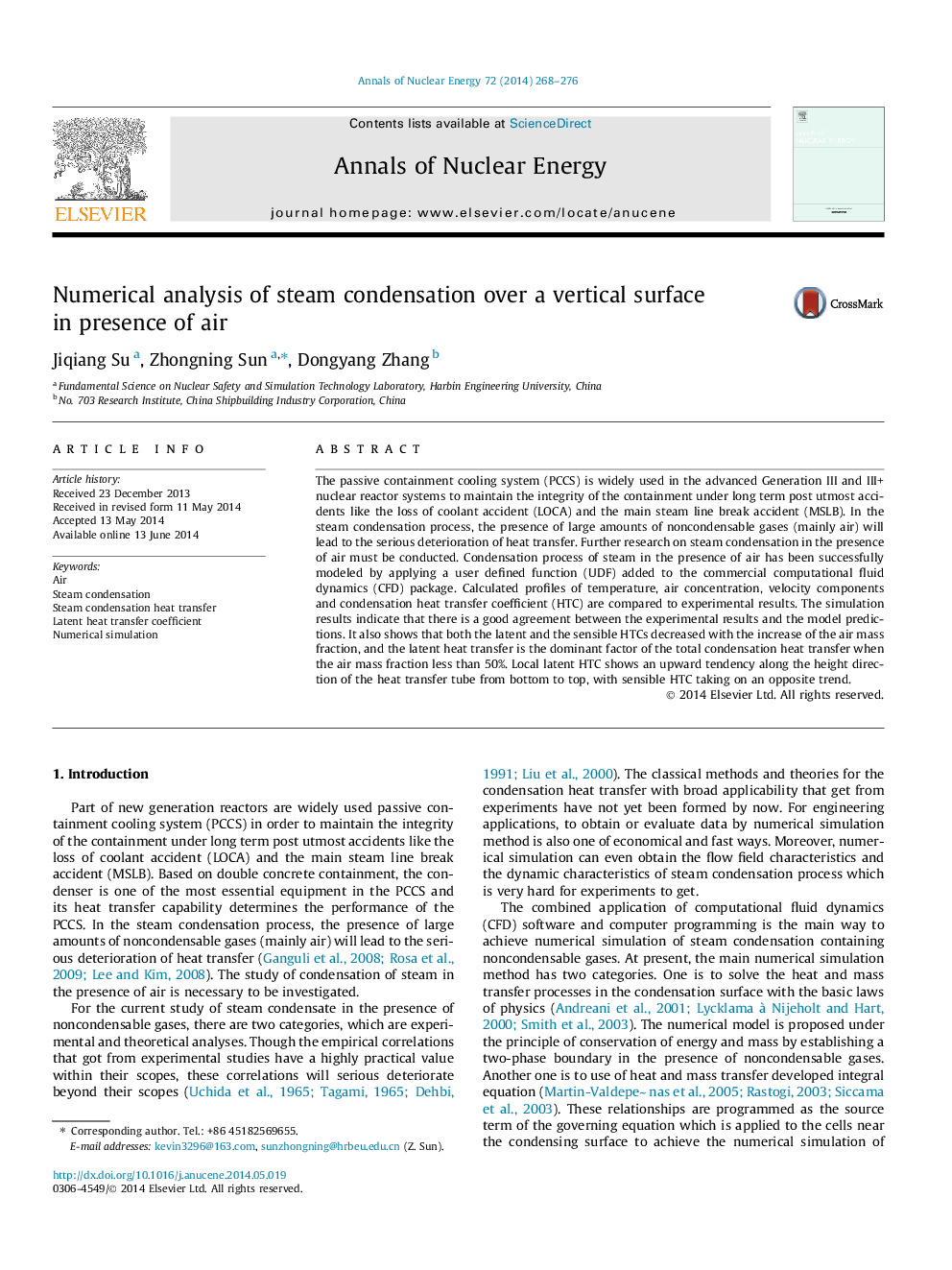| کد مقاله | کد نشریه | سال انتشار | مقاله انگلیسی | نسخه تمام متن |
|---|---|---|---|---|
| 1728137 | 1521126 | 2014 | 9 صفحه PDF | دانلود رایگان |
• The numerical simulation was achieved with CFD for steam condensation with air.
• Both of the latent and sensible HTC increase with decrease of air mass fraction.
• The local latent HTC shows a decreasing trend along height direction from the bottom.
The passive containment cooling system (PCCS) is widely used in the advanced Generation III and III+ nuclear reactor systems to maintain the integrity of the containment under long term post utmost accidents like the loss of coolant accident (LOCA) and the main steam line break accident (MSLB). In the steam condensation process, the presence of large amounts of noncondensable gases (mainly air) will lead to the serious deterioration of heat transfer. Further research on steam condensation in the presence of air must be conducted. Condensation process of steam in the presence of air has been successfully modeled by applying a user defined function (UDF) added to the commercial computational fluid dynamics (CFD) package. Calculated profiles of temperature, air concentration, velocity components and condensation heat transfer coefficient (HTC) are compared to experimental results. The simulation results indicate that there is a good agreement between the experimental results and the model predictions. It also shows that both the latent and the sensible HTCs decreased with the increase of the air mass fraction, and the latent heat transfer is the dominant factor of the total condensation heat transfer when the air mass fraction less than 50%. Local latent HTC shows an upward tendency along the height direction of the heat transfer tube from bottom to top, with sensible HTC taking on an opposite trend.
Journal: Annals of Nuclear Energy - Volume 72, October 2014, Pages 268–276
